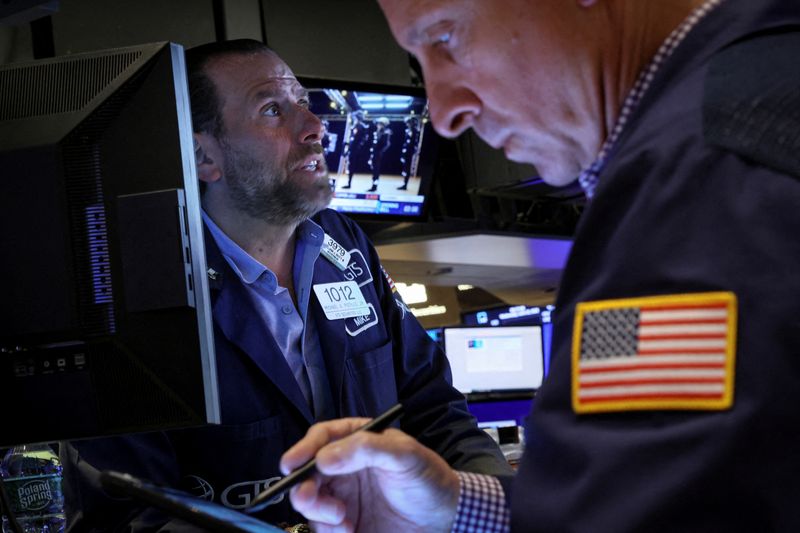Blistering inflation report sets grim tone for U.S. markets
2022.07.13 19:06

FILE PHOTO: Traders work on the floor of the New York Stock Exchange (NYSE) in New York City, U.S., June 22, 2022. REUTERS/Brendan McDermid/File Photo
By Lewis Krauskopf
NEW YORK (Reuters) – A surprisingly hot inflation report for June is darkening the outlook for markets, as investors brace for more hawkishness from the Federal Reserve and continued volatility in stocks and bonds.
Wall Street met the number, which showed consumer prices rising by a greater-than-expected 9.1% in June, with a collective groan. Analysts at Wells Fargo (NYSE:WFC) called the report “rotten to the core” while BofA Global Research strategists said it confirmed their recent call for a mild U.S. recession.
The S&P 500 stock index was down 0.4%, after falling more sharply at the market open. The index is down over 20% this year. Treasuries shuffled between gains and losses. The benchmark 10-year Treasury yield, which moves inversely to prices, was last at 2.95%, little changed from a day earlier.
“We still don’t know what’s going to happen but it’s most likely we’re going to have a recession because the Fed is going to have to act aggressively,” said Chris Zaccarelli, chief investment officer at Independent Advisor Alliance.
“Unfortunately we were looking for good news and this is not good news,” he said.
Recession worries have grown over the last few weeks, with several Wall Street banks calling for an increased chance of an economic downturn. The International Monetary Fund on Tuesday warned that avoiding recession in the U.S. will be “increasingly challenging” as it again cut its 2022 U.S. growth forecast.
The benchmark U.S. two-year/10-year yield curve on Tuesday posted the largest inversion since at least 2010, once again flashing a signal that has preceded past recessions.
Following the inflation data, traders of futures tied to the Fed’s policy rate swiftly priced in a higher probability of a 100-basis-point rise at the July 26-27 meeting. Central bankers over the past couple of weeks have already signaled support for a 75 basis point rate increase.
The hawkish outlook for the Fed compared to many other global central banks also rippled through currency markets, with the dollar surging to a 20-year high against a basket of currencies while the euro broke below parity against the greenback.
“The Fed is going to continue to be aggressive, and right now the Fed is not your friend, at least from an investor stand-point and until that changes, it’s going to be hard for stocks to gain traction,” said Anthony Saglimbene, global market strategist at Ameriprise Financial (NYSE:AMP).
Some analysts said inflation could start to cool in the coming months, noting a recent drop in commodity prices.
Peter Cardillo, chief market economist at Spartan Capital Securities, said “the numbers are ugly” but added that “the hints that inflation might be beginning to decelerate are there.”
Investors are now turning to second-quarter earnings season, which is just starting, to reinvigorate the market.
S&P 500 earnings are expected to have climbed 5.7% from the year-ago period, but investors are skeptical companies will be able to achieve those estimates given the uncertain economic outlook, including high inflation that is raising costs for both consumers and businesses.
“We look for further market volatility as investors digest the combination of slowing growth, persistent inflation, and the likelihood that second quarter earnings season results in downward revisions for margins and profits,” John Lynch, chief investment officer at Comerica (NYSE:CMA) Wealth Management, said in emailed comments.








